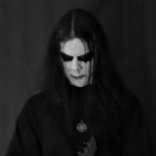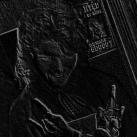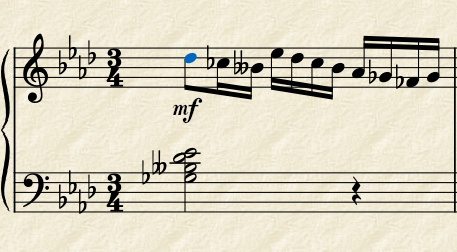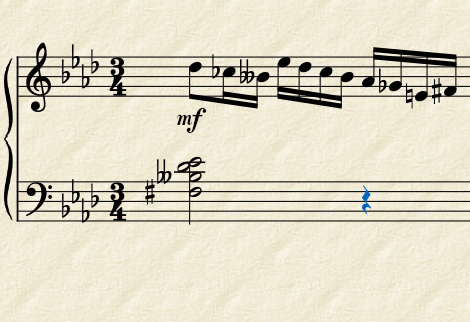Leaderboard
Popular Content
Showing content with the highest reputation on 03/08/2023 in all areas
-
Theme is from Rust Violin Solo Sonata no.2 Orchestration: 2 Flutes, 2 Oboes, 2 Clarinets, 2 Bassons, 4 Horns, Strings. Variaces sul tema de Rust.pdf Youtube Video4 points
-
Hi all, I've not posted anything for a while. I'm in the middle of another large-ish piano and orchestra piece but I've reached a bit of a road block. So I was sat at the piano the other day, taking a break from the orchestral stuff and this little thing sort of just came out. A few days editing and polishing and here she is. Ninlil is a Mesopotamian Goddess of the winds. She's the wife of Enlil, father of the Gods. This is her during one of her more gentle moods.......... mostly! I have the feeling that this will get expanded or become part of something else at some point but we'll see. Hope you like it. Here's the score, just in case............. Ninlil - Full Score.pdf2 points
-
Hello all, I am new here in the forum. I am 25, live in Bonn (Germany) and am a computer scientist by profession. I've been composing for a few years and have already written many works. I play piano since I was 8 years old and also a little organ and clarinet. Everything I know about composing, however, I have acquired myself and has come about through a lot of practice. Unfortunately, I never had composition lessons, so I still make some mistakes, for example, in notation, form theory, etc. I compose mainly large orchestrated works and always strive to raise my technical standards and write more complex pieces. The movement is the final movement of my 8th symphony and contains both quiet passages and more moving ones. The movement reflects well my preference for romantic harmonies. The movement itself is quite free and does not follow a main motive (although there are recurring structures). It's very long I know but I would really appreciate your opinion. Also, please give me constructive criticism and especially suggestions on how I could improve further. About the instrumentation: Woodwinds: 2 flutes 2 Alto Flutes 2 Bass Flutes 2 oboes 1 English Horn 2 Clarinets in Bb 2 bassoons 1 Contrabassoon Brass: 4 French horns in F 1 trumpet 4 trombones 1 bass tuba percussion instruments Timpani tubular bells Strings: 1st violins (14) 2nd violins (10) violas (8) Cellos (8) Double basses (8) Symphony 8, Mov. 4 Finale.pdf Here the Soundcloud link: Greetings Nico2 points
-
Here is my first piano concerto I wrote this score today and It may be my first masterpiece, friend2 points
-
One of my favourite works in the repertoire are the suites by Holst and specially the Holberg suite by Grieg. You captured that line of nostalgic retro-classical perfectly.2 points
-
This is not a dance suite, but is made out of old pieces in my dance suite folder that didn't make the cut (back when I was writing into the sequencer). The 1st movement - Serenade - is a fast ternary form in Ab major. Originally it was meant to be a prelude to a dance suite. It is in 4/4. The 2nd movement - Lament - was originally meant to be a Courante, but it doesn't satisfy the requirements of the kind of dance that a Courante is meant to be (and it's in 2/4). This piece is in Ab minor and binary form. The 3rd movement - Intermezzo - was also conceived as a prelude to a dance suite. It is in F# major. It is in 4/4 and binary form. The 4th movement - Postlude - was originally meant to be an Allemande but ended up being too slow to be any kind of dance, even though it has some characteristics of an Allemande. It is in 4/4 and E major. The overall form is fast, slower, slower, and even slower. Let me know what you think! I appreciate any of your constructive comments, suggestions or critiques!1 point
-
The idea is there, but it's still a work in progress. Now I can finally start focusing on the 4th mvt! I had the idea of making it scherzo-like, but I couldn't get away from the 6/8 feel. Still ABA form like a normal scherzo would be. Oh yea, I know the ending is reminiscent to Pines of Rome. That's why I put ricorda i pini next to the Adagio marking! It means "remember the pines." AUDIO : https://drive.google.com/file/d/1v9ARsboO2ZNuaOaPyeXtRcKTFE21G9wf/view?usp=sharing1 point
-
Long time no see! I've recently been composing again and I'm very happy with this one. Structure resembles sonata form: Exposition: 0:00 A is polychords from F, C and G Lydian. 1:40 B is dobled melodies from polychords of G, Bb and Db Dorian. 2:52 C is textures from polychords of B, C and C# Locrian. Development: 1. 4:12 a few A tutti chords to close the exposition and open the development 2. 4:26 A+B juxtaposed 3. 4:58 A+C juxtaposed 4. 5:38 A+B+C tensely juxtaposed 5. 6:33 A+B+C integrated resolutely in a "collective agreement" mode based on E Lydian, ending in a little cello solo epilogue. Recapitulation: 8:14 order C-B-A Using Noteperfomer, warning: still loud but more balanced. Positive feedback revolves around the beauty of the harmony, orchestration and the interesting form. Criticisms I've received are that: It may be difficult to follow because the lack of literal repetition of an entire theme. A lacks a theme proper. The exposition and recapitulation of A and B lack contrapuntal interest. The harmonic rhythm is slow throughout. The lack of other movements I'm creating a version with a larger orchestra considering the criticisms, may even do a theme and variations second movement.1 point
-
Hello everyone, Here I am back among you, dear composers, to present you my latest composition: It is a piece for orchestra and solo clarinet, whose argument is to stage the run of a prisoner, in a spirit that I wanted to pay tribute to American cinema of the 1960s, or at least an evocation (and an argument). I don't have the score clean, but you can see a little what my manuscript looks like, which serves as a visual as I got used to on my recent compositions intended for Youtube. I hope you like it, in any case, it amused me (and took time)... Friendly yours K.1 point
-
I am currently working on a new piano sonata. I just completed the first movement, and I would be very grateful for your comments1 point
-
1 point
-
Thank you Henry, I am very pleased that you liked the sound. But thanks also for the other feedback. In fact, I am often a little bothered by the fact that my pieces from time to time are not always coherent and some passages do not fit perfectly together. I still have difficulties to make my pieces more consistent. However, this piece is already about a year old and I am working on this problem. In the meantime I have written a few pieces in which the inner coherence is better recognizable. I will upload them soon. And yes, I think also think practice brings the most. I spend a lot of time composing and thinking up new things. Thanks for your feedback! Nico1 point
-
Dear Nazariy, I liked the variations very much. I like the sensitive slower passages very much, the more agitated variations spark a lot of energy and I agree with Henry that a certain stylistic similarity to Beethoven is unmistakable. I especially like the sound of your sound library. Which libraries do you use? About the individual variations: Introduction: Beautiful soft and lovely sounds. A very nice tempo. Harmonically very nice. Very nicely done as an introduction. Variation 1: At this point I must again emphasize the really good sounding sound library. The woodwinds included sound exceptionally good. Again, I find the sound very pleasant. The ornaments and resolutions are Beautiful, especially the trills in the flute. Variation 2: At this point, I think the similarity to Beethoven comes out very well. Rhythmically very beautiful. Variation 3: The triplet passage in the first violins is very rousing and (as already mentioned) exudes a lot of energy. I also find a it a little bit Mozartean. Variation 4: Again very sustained, but this time also lithargic and heavy. Like a funeral march. Here, too, I somehow hear more Mozart (maybe it's just me). Variation 5: Powerful and with a lot of energy, very nicely realized. Variation 6: This variation is even more cheerful and carries "joie de vivre". I like it very much. Variation 7: Here you put one more on top. I like that especially in the last 3 variations you have a kind of steady increase towards a "finale". The end is powerful and very well fitting. All in all you have written 7 variations which (I think) fit together very well, partly build on each other a bit and generally represent a good tonal and rhythmic variety. I have listened to the variations 6-7 times now and like them very much. You handled the instrumentation competently and showed fine feeling for melody and harmony. Bravo!1 point
-
Darn, I wish I'd seen this sooner, but I'll give it a try!1 point
-
Hi @Henry Ng Tsz Kiu , many thanks for taking your time going over it! I've added the times. I think this music/form is very narrative, I didn't have a story in mind so whether you think of of other Earths habitats or of three friends or gods fighting and reconciliating it up to the listener! I reverse the order in the recapitulation mainly because I think of the first big chord in the exposition as with the role of Tonic to the whole, a full return home, also because the ending of the development is really melodic it is better to contrast is with texture. The "lack of other movements" comes from people who really liked it so its actually a compliment. I made another version of A. which I attach in this message, with Sibelian melodies. It feels more like a climatic ending. I may do two versions for the larger work: a NeoRomantic one and a Post-Impressionist one.1 point
-
Thank you so much Henry, I really appreciate it. I don´t know if I can say that the parallel fiths relates to Ninlil herself but I wanted something that sounded.............not usual shall we say, other worldly. The 5/8 time signature was also an idea to keep the piece in a sort of unstable state in a sense, or at least not easy to pin down. I'm so glad you think it worked. I'm still tidying up the score but I will post it here too once it's done. Kind regards Mark1 point
-
Hello @Mark101, Is this related to the use of parallel fifths here? That's beautiful! The beginning is very beautiful with its harp-like playing, like in the fairyland for me! Starting around 0:26 it gets more excited and it's very cool! I like that modulation in 1:29 to E flat major/C minor. Very Japanese anime feel for me. 1:52 is very beautiful with those high register notes! 2:04 suddenly turns to a Bachian cadenza and after that it's very nice with those high register notes continue! A nice ending as well! I love the driving rhythm all over the piece like chasing the Goddess! Thanks for sharing Mark and hopefully you will present us that large-ish piano and orchestral piece in a near future! Henry1 point
-
Hey, I hadn't read your comment! Thank you very much! And I'm very happy that you like my end. It is true that in this general rise, the idea was still to arrive at an end shape. The poor little clarinet (the prisoner's soul in pain, if we will) had no choice but to scream and giggle to be heard again in this crash before a necessary return to the starting pirouette. Well seen from you! (I think you know how to perfectly translate emotional content). Delighted in any case to find here the ears quite open and benevolent for these enlightened comments! I promise to spend as much time as possible listening to the music posted (with the scores, which is a big asset!)1 point
-
I really hate those people who claim they know the absolute truth of music or having an absolute standard on something that is dogmatic in music. Music is way too grand and magnanimous to be limited by any "definition" or "standard" by those narrow-minded people. To link music with politics is necessary sometimes but to over-interpret it is nasty. Only focusing on "new", "originality", "avant garde" cannot help with the progress of music at all if we don't find new dimensions in our heart, thinking and soul, after all music is not only product of craft and ideology and human beings are capable of much more than that. A total scientific approach to music is a joke as well since to quantify music is ridiculous. You can do that in some way and it does give us some insights but obviously not the full picture of music. If human beings can be measured in numerical terms then it will be way too dangerous and shallow for human culture, Henry1 point
-
The one who emphasised homework with large red strokes with a felt pen was the conservatory's writing teacher. A rather feared "old girl" who finally turned out to be very nice. A squeaky humour that worked very well. Those who were the most vachards, were the self-proclaimed supporters of experimental contemporary music that I followed in faculty (I had entered a very "new music" department, which wanted to be avant-garde, swore only by some of their own works of which they were glening in a small enclosed world. Of course, it was exciting, and of course I caricature because there were many fantastic things to discover and learn, but in any case, everything that could look like a perfect chord was seen as a petty bourgeois class mark, from the hated conservatories that existed only to train young people to become canned musicians. In France, we love these bell tower fights that still continue, but fortunately are far behind my concerns. Moreover, there is a very unreputable obedience that has settled quite well in some institutions and conversely advocates a return to the "traditional values" of tonal music. Their works for the moment look like bad Brahms and they seek to prove by A plus B that Mozart is superior to Boulez. (which makes no sense because there is no scale of value that can measure this to my knowledge...) In short, the ideal is to make the music you want, keeping all this in a corner of your head, but without making much of it when you do not need to affiliate with this or that chapel, this or that network, to get an order.1 point
-
Like the title says Truth is, it's a short piece I wrote for a woman who likes this kind of music. Let me know what you think of it!1 point
-
1 point
-
Dear Omicron ! (Omicron, my favorite variant, which I caught twice!) I am totally amazed by so many compliments! Again, this can only encourage me to persevere, even if I will have to recharge my batteries... (I had started writing all this just before a professional trip to Asia, representing a big cut and fatigue related to adaptation). So you really felt the final drop in voltage (and My wife no longer remembers very well what I look like by dint of staying locked up in my office). My first idea was to mix the little jazzy things and a big climax, but too difficult to achieve in my jetlag state. So, I fell back on more conventional sequential approach, but the climax would have required more preparation and the Jazzy atmosphere is a little aborted at the end. Regarding the beginning of the song, which gives a false lead, it was naturally intentional in several ways: the idea of creating a context a bit of a 60s film, and I also wanted to find a certain somewhat ironic relaxation that would put at a cool distance the more dramatic aspects of the heart of the composition and its many phases of tension, try a pseudo Jazz writing, which has only the And also try to connect this with a more classic (or modern-classical) writing with the question of transition. This question of transition is also a concern and a subject of reflection. I find it difficult to get out of a writing system you have entered, to get out of one atmosphere to join another. But you analyzed the thing well in your comment. (juxtapositions, ruptures, maskings, mergers etc...) In any case, I must also try to streamline my workflow to be able to generate edited scores in the process. I promised myself to do it, using a little tip: create in parallel to the main version a secondary instance of Reaper with extremely simplified rhythmic values. then export as much as possible this into midi files to import them into Muse score. It will probably be for the next time. As for the display of the texts, I did not understand if you were talking about the subtitles of the parts (in yellow) or if you were referring to the macro photos of my manuscripts. On my screens, the subtitles remain readable, but perhaps this problem needs to be corrected. I'm going to study this. Finally, I must also confess that these symphonic pieces with solo instruments are rather intended to have a playful approach, to counteract a little the gloom that could well capture us in the silence of our musical face to face! So, I don't forbid myself a few small touches a little easy, some seductions that my teachers would have ravaged with a line of red felt in my youth. In any case, a huge thank you for your precise, attentive and also enlightening listening for me. It gives me great pleasure!1 point
-
Hi, this is part of my series about orchestration of piano pieces by composers born in what is Ukraine today. Glière, who modified his name to the French taste, was born in Kiev. Oh, if my sadness is a short piano piece. The language is absolutely romantic. Here is my recreation:1 point
-
Sounding good! I would agree that it's a little left-heavy, though. I also thought the dynamics were a bit too much of a roller coaster toward the start of Serenade, but otherwise enjoyed it.1 point
-
This collection deserves its place. I like it very much. I find a difference in style between the first two (more galant) and the others (more romantic).1 point
-
Hi Peter, I have to say the Serenade begins like London Bridge is Falling Down! As Quinn said I won't comment on the technique since I have nothing to add! I love the middle section with the harmonic colors! You can probably use D.C al Coda instead of 1st ending I guess. The lament ends surprisingly on Gb major and this make me think of Renaissance modal cadence. Very soothing and fluent exchange of voice here! For the Intermezzo, I freakingly love this! It has some Mahler 10th in it with the contemplative undertone!! The harmonic lanfuage is less dissonant but very similiar!! You should have extend this!! For the postlude, shxt! I cry for its beauty and transcendence. Again I want this to be extended with this utter beauty!!! It's simple but utterly beautiful for its simpliclity. It's like beauty directly in front of you without any artificial decorations, just beauty itself. A simple octave up for the theme transform it from a contemplative and immanent theme to a transcendental one! It's very Brahmsian for me like his E major slow movements in Symphony no.1 and no.4. I utterly love this postlude which ends this Suite perfectly. For me the order is amazing sincw it gets better after one another! I absolutely love this and thanks for sharing Peter!! Henry1 point
-
Very nice work. Classical and succinct. Nothing to comment on the composition or engraving since you're anyway accomplished in harmony, vertical spacing in chords, thematic work and so on, and the rendering was ok although a little more stereo spread wouldn't be amiss. Violins 2 might be given a little more volume in the Postlude when they take over melody from Violins 2, important from bar 7. My only comment is about the arrangement. You give Violins 1 all the work in the intermezzo. There's a case for sharing the melodic part with violins 2 and even repeating (for either of them) the main theme an octave higher in bar 7. (It also might be possible to share the principal melodic work between the two violins elsewhere - but that's just a matter of preference. Oh, and ok, I can't know how you produced the scores but if using notation software, the dynamics could be a little more...dynamic! It's one of those small suites that would make a wonderful live performance. All good then. A pleasant listen, away from the discords and clashes of the musical world I seem to live in. A musical holiday is always nice... blue skies, light and air.... :>D1 point
-
This is a piece I was inspired to write from a trip I took pre-Covid to Europe. I spent three weeks traveling by train, including on Czech rail aka České Dráhy. I wanted to capture the feel of being on a train, zipping through the countryside and cities.1 point
-
Ok, so I will be a bit harder on you with this critique then. This piece sounds more like a short study on scales and octaves to me. If this was meant to be a composition, then a few things: Watch the parallel octaves. I'm not an extreme music theorist, but in this case your piece mostly goes without them, then you throw them in toward the very end without much of a purpose. There's no theme. Not all pieces need a theme, esp. if this is a study. But throwing one in there helps keep a piece interesting. The piece is really just scales. No articulations, dynamics, velocity changing I'm big on good audio output, and a good way to help not desensitize the ear is by paying a little more closer attention to point 4. Because even if a piece is just a study, you can make it sound more interesting by having a better audio output.1 point
-
This is not one of my first compositions also not one of my best (see W1W2W3) also no raindrop etude inspiration1 point
-
Any context to this piece? For example, it would be nice to know if this is one of your first compositions. Your answer would influence my critique. Also, were you inspired by Chopin's Raindrop Etude by any chance?1 point
-
Hello again, Thanks a lot for your kind response! Spelling is certainly an interesting issue. There are often situations where I find it difficult to make the right choice. Also when I look at some work of great composers (like for example some works of Schuman), I cannot always understand the reason for some of his spellings. Therefore it is so nice when people provide me with alternative opinions and explanations. I can see that your two suggestions for MS 179 are certainly possible and legible. (I would probably prefer the first one). Also, I agree that the flats in MS 180 should be bracketed, but maybe it becomes a bit messy (at least for sight reading), and this would be another reason to go for flats in MS 179. Altogether, I am very grateful for your engagement! Thanks a lot!! (In the meantime, I wrote the second movement of the sonata. I will post it as well and I would be curious to find out what you think of it.) Best regards1 point
-
Yeah it indeed did. Whatever suits you. If you do not think you need dynamics or you don't want to be that specific (regardless of what a potential player of your music would do) it's completely alright. After all dynamics are another source of "control" you may or may not need, depending on the piece. Yeah, most likely. Probably expensive libs don't have that issue but they are, ahem, expensive. Most articulation can be somewhat done in music notation software but it will never match human playing I guess. Yeah if you don't want to repeat a note with and without accidental, jump or use double flats I don't see another way. However now that I look again, shouldn't flats in M180 be bracketed? I myself often doubt in cases like Fb vs E in the context of lots of flats around and eventually it's a matter of each composer background, I don't think there's much written in stone here, so if you wrote it like this: I may have not complained but someone else may have. I believe it's equivalent. Even something like this could be explained as "flats when you go down, sharps when you go up" and we may agree this feels kinda strange but I again don't think there's nothing like an absolute truth (just like what happens in some fingerings). I found it strange but very likely some of my works do have things like that. Kind regards!!1 point
-
Hello Daniel, Thank you very much for your feedback, and I am glad that you like the piece. It´s true that it was quite an effort to write this movement. At first, I was not satisfied, and had to rewrite most of it. But eventually I think that it became acceptable. Regarding the use of dynamic marks, I should perhaps have been more specific. But often it is a bit arbitrary. Some famous composers use very few dynamic marks and leave it more or less to the judgement of the musician, whereas other composers provide ubiquitous instructions. And when you listen to top notch interpretations of great pianists, I find that they often ignore very much of the composers instructions. You bring up a good point about digital playback. This is really a nightmare. The overall dynamic range is very poor. For example, when I try the adjust for pp, I get some ugly muddy sound. I think that it has something to do with jumps from one sampling layer to the next one. To get a proper difference between p and mp is also very difficult. On a real (good!) analogue piano this is easy. Another issue with electronic playback is to incorporate small differences in articulation (including rubato, small attacks, small tempo changes etc.). In principle, this could all be accomplished in a DAW, but for me, this would be an endless task.. Regarding the sharps in M 179, this is an interesting question. I actually did this on purpose. The transition starting at MS 175 to 180 is actually one of the things, which I was really pleased with. When setting flats or sharps, I looked at the fundamental scales of the measures in the transition. As far as I can see, this is Bb-minor for MS 176, Gb- major for MS 177, and then F-major for MS178. But for MS 179, I can only see that it is F-sharp minor with an augmented E in the scale. I did not see a reasonable scale with only flats. Thus, I wrote it with sharps. Maybe, you would still find it more convenient to write with flats, but it did not make sense for me when I played it on the piano. I would be very interested to learn what you think of it. Maybe I am wrong (?) Once more, I want to thank you for your interesting comments. Best regards. PS- I uploaded an adjusted score after making some minor corrections - DS1 point
-
Very delicate piece. Everything in this movement is telling me that you did put a decent amount of effort on it, tell me if I'm wrong. Despite of that, it sounds effortless in the sense it flows without resistance through my ears and my mind. The melodic line is very beautifully constructed and the Alberti bass doesn't get repetitive. What is perhaps redundant is the piano dynamics mark. You don't generally abandon it up to M134 which is not neccesarily bad at all, but I feel the adagio espressivo part could have benefited from a more flexible approach in that regard. However, your composition, your choice :). Despite you might have done this on purpose, it seems strange to find a bar full of sharp notes in a 4b key (M179). There are many other things I missed. I'm listening to it again. I was wrong in the dynamics part, the digital recording just badly distinguishes between ppp, mp and p if it even tries to do it (perhaps not and my mind just makes it up, but articulations are neatly done at least). The score is very nicely engraved. I really enjoy the Animato section, a lot. I know this is all disordered but hope you don't mind much, I really liked this work of yours. Looking forward to listen to next movement once you get done with them. Thank you for sharing. Kind regards, Daniel–Ømicrón.1 point
-
1 point
-
Hello Henry, Thank you very much for your comments. In fact, I am often inspired by the music of Schubert, as in the case of this piece. It is true that there are a number of different episodes and I often like to write my pieces in this way- I did not have a plan for a defined underlying structure. It sort of developed organically by itself. The difficult thing is always to avoid (what shall I call it) an ”out of place” musical progression between the sections. It is difficult to describe this, but you will understand what I mean. There will be two more movements. I have not made a final decision about them, but for the second movement, my thoughts are going in the direction of a theme with variations, and the third movement (as a contrast to the first movement) will probably be a (molto) allegro, also based on a particular theme. It will take me quite some time to pull everything together, but I will post it in due time. Thanks a lot Peter for your constructive comments. Immediately, I must respond to your comment about the meter. How could I have overlooked this! You are right, it should be ¾, and I will change it and upload the corrected score. In fact, in several places ( after ms 171) my notations are already in line with ¾, but somehow, I forgot to make an adjustment. Unfortunately, this is not a real performance. It would be much better, but unfortunately I would not be able to do this anymore after a hand injury and a loss of dexterity. Hello hw1234 Thank you for you feedback! My earlier sonatas are also uploaded. You can hear them if you go to my profile and click on “my compositions”, where you will find them1 point
-
1 point
-
Very well done! Quite an underwhelming style of writing for the piano. It's very low-key and subtle and nonchalant (Ok - I think I've run out of synonyms now LoL). Although meas. 119 - 192 seem like they're all in 3/4 rather than your marked meter of 6/8. I never get the feel expected of a 6/8 meter in that part, nor does there seem to be some kind of 6/8 - 3/4 hemiola going on either. Thanks for sharing! Is this a real performance? Sure sounds like one. Great job!1 point
-
The sonata is really Schubertian for me: Great melody and quite like his moment musical with the modulations of keys and contrast between major and minor. Free and humorous sometimes with attracting power. The movement is quite episodic for me. Is there an underlying structure in it? Definitely looking forward to later movements. What will be the style of them?1 point
-
About 6 minutes. It's chromatic, impressionist and through-composed, based on 3 motifs; 1. at the opening; 2. the quiet bit at bar 13; and 3, the oboe solo at bar 21. Like some of my things it's about struggle. Here, inspired by jungle, its unpredictability, its tensions. I've tried this mood before but failed - I may have failed here but there were three rules this time: it must not sound like Villa-Lobos; no orchestral imitations of jungle sounds; and no ethnic folk tunes. My own crit is that there are several outbursts but almost none lead to a sustained tutti, they break off into quieter passages. I'm not sure if this works. I've tried cutting some of them out but they leave the work incoherent. I suspect at least one of the 'upward rushes' should lead to a fuller episode. So, please, if you have time to listen (I know 6 minutes is a bit long) and are of a mind to comment it would be most appreciated. I don't expect good critique. Feel free to react as you will. But thank you for anything you have to say. Bear in mind it's modern which won't be to everyone's taste. Edit: P.S. All instruments at concert pitch except Basses (transposed up 1 octave) and Piccolo (1 octave down).1 point
-
Hello everybody! I am very excited to present to you my most recent composition - a piece for solo marimba and string orchestra. It is in standard sonata form. I would like to hear you thoughts on it. Hope you enjoy! The project was made possible by the generous financial support of National Cultural Fund, Bulgaria - https://ncf.bg/bg1 point
-
One of a set of 5 contemporary pieces written for wordless voice and orchestra - in this case the voice acts as a solo. In some others it's integrated as an instrument. Medium-sized orchestra: double winds, triple brass, 4 horns, guitar, percussion and strings. Originally the set was titled Crisis in the City but now just this piece carries the title. Atonal, through composed - beware if you don't like high voices. Not much use posting a score as it runs to 28 staves which would make it awkward to read on a small screen.1 point
-
I'm reposting a piece that I posted here in 2013...one of the first pieces I posted on this forum. This was composed for the March-April (when we had bi-monthly competitions); the theme I believe was to write something based on mythology. Not to brag and boast, but I won that competition. I chose to write a nocturne representing the Greek goddess of night, Nyx. I was inspired by the great French impressionists, and their influence clearly shows in this piece. The audio and score are a little messy, since the original file will not cooperate with the new finale, so I'll play around with cleaning both things up. Enjoy!1 point

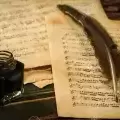


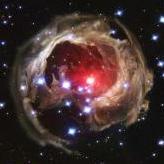

.thumb.png.8b5b433a341551e913a34392660bc95b.png)




